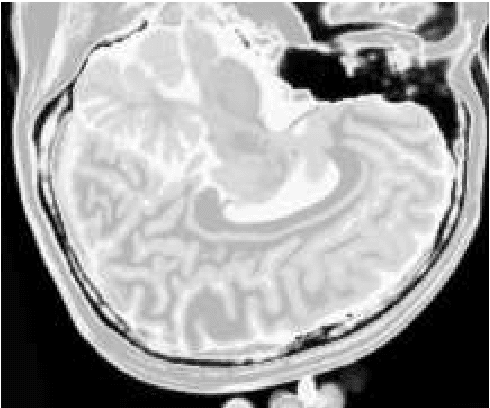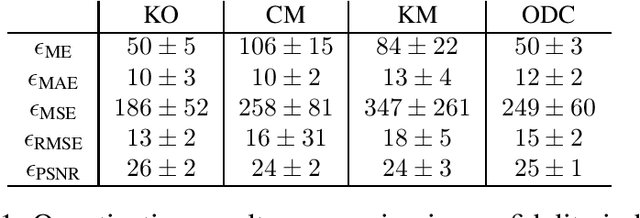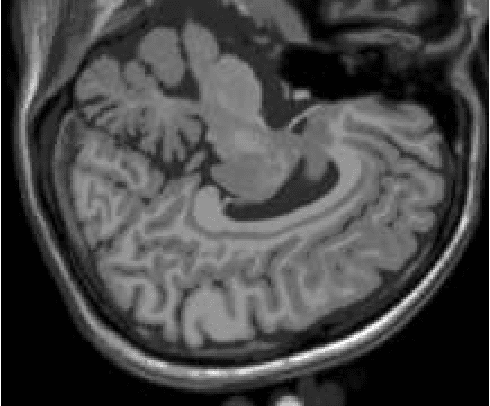Francisco Marcos de Assis
Dialectical Multispectral Classification of Diffusion-Weighted Magnetic Resonance Images as an Alternative to Apparent Diffusion Coefficients Maps to Perform Anatomical Analysis
Dec 03, 2017



Abstract:Multispectral image analysis is a relatively promising field of research with applications in several areas, such as medical imaging and satellite monitoring. A considerable number of current methods of analysis are based on parametric statistics. Alternatively, some methods in Computational Intelligence are inspired by biology and other sciences. Here we claim that Philosophy can be also considered as a source of inspiration. This work proposes the Objective Dialectical Method (ODM): a method for classification based on the Philosophy of Praxis. ODM is instrumental in assembling evolvable mathematical tools to analyze multispectral images. In the case study described in this paper, multispectral images are composed of diffusion-weighted (DW) magnetic resonance (MR) images. The results are compared to ground-truth images produced by polynomial networks using a morphological similarity index. The classification results are used to improve the usual analysis of the apparent diffusion coefficient map. Such results proved that gray and white matter can be distinguished in DW-MR multispectral analysis and, consequently, DW-MR images can also be used to furnish anatomical information.
Avaliação do método dialético na quantização de imagens multiespectrais
Dec 03, 2017Abstract:The unsupervised classification has a very important role in the analysis of multispectral images, given its ability to assist the extraction of a priori knowledge of images. Algorithms like k-means and fuzzy c-means has long been used in this task. Computational Intelligence has proven to be an important field to assist in building classifiers optimized according to the quality of the grouping of classes and the evaluation of the quality of vector quantization. Several studies have shown that Philosophy, especially the Dialectical Method, has served as an important inspiration for the construction of new computational methods. This paper presents an evaluation of four methods based on the Dialectics: the Objective Dialectical Classifier and the Dialectical Optimization Method adapted to build a version of k-means with optimal quality indices; each of them is presented in two versions: a canonical version and another version obtained by applying the Principle of Maximum Entropy. These methods were compared to k-means, fuzzy c-means and Kohonen's self-organizing maps. The results showed that the methods based on Dialectics are robust to noise, and quantization can achieve results as good as those obtained with the Kohonen map, considered an optimal quantizer.
* in Portuguese
Fuzzy-Based Dialectical Non-Supervised Image Classification and Clustering
Dec 03, 2017



Abstract:The materialist dialectical method is a philosophical investigative method to analyze aspects of reality. These aspects are viewed as complex processes composed by basic units named poles, which interact with each other. Dialectics has experienced considerable progress in the 19th century, with Hegel's dialectics and, in the 20th century, with the works of Marx, Engels, and Gramsci, in Philosophy and Economics. The movement of poles through their contradictions is viewed as a dynamic process with intertwined phases of evolution and revolutionary crisis. In order to build a computational process based on dialectics, the interaction between poles can be modeled using fuzzy membership functions. Based on this assumption, we introduce the Objective Dialectical Classifier (ODC), a non-supervised map for classification based on materialist dialectics and designed as an extension of fuzzy c-means classifier. As a case study, we used ODC to classify 181 magnetic resonance synthetic multispectral images composed by proton density, $T_1$- and $T_2$-weighted synthetic brain images. Comparing ODC to k-means, fuzzy c-means, and Kohonen's self-organized maps, concerning with image fidelity indexes as estimatives of quantization distortion, we proved that ODC can reach almost the same quantization performance as optimal non-supervised classifiers like Kohonen's self-organized maps.
 Add to Chrome
Add to Chrome Add to Firefox
Add to Firefox Add to Edge
Add to Edge